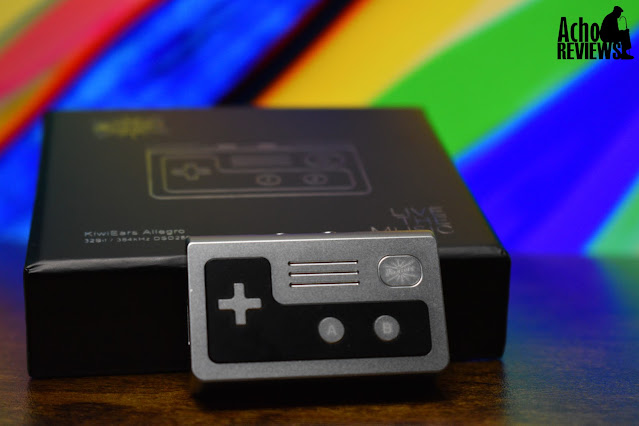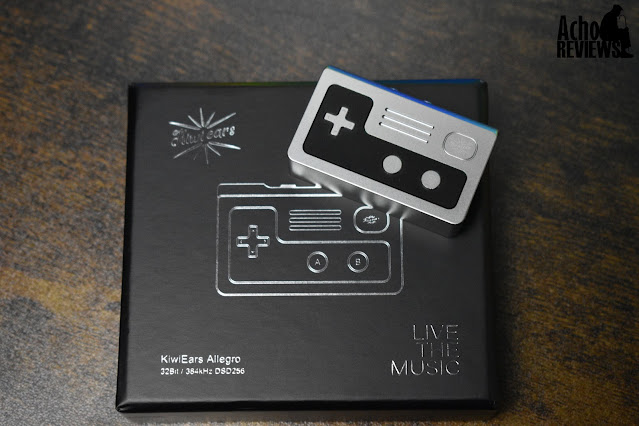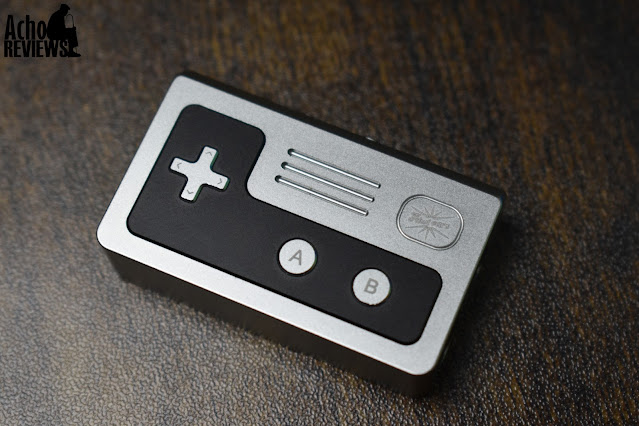TLDR version on YouTube: TDLR - Kiwi Ears Allegro
The Kiwi Ears Allegro has been sent to me by Linsoul in exchange for the publication of this review. Linsoul have not made any requests and I will do my best, as always, to be as unbiased as possible.
You can find a link to the Allegro via Linsoul by visiting the version of this review published on my blog (
www.achoreviews.com).
As with all links I publish, it is a non-affiliate link.
Intro…
The Kiwi Ears Allegro is the first dongle from the brand, in fact, I believe it is the first product from the brand outside of IEMs, unless there has been a product I have missed. Priced at just over 50€ (at the time of writing this review), it is quite a cheap and cheerful device that is aimed at those looking for something to power their IEMs. I say this because the specified power output of the Allegro (70mW @ 32Ohms unbalanced and 155mW @ 32 Ohms balanced) is not something that is really aimed at driving more demanding over ear headphones or even some of the hungrier IEMs out there. However, as a source for IEMs, especially those that are similar to Kiwi’s own sets, it is more than enough. In fact, it actually performs better than some other alternatives due to the amplification being totally controlled by the device itself and not the source feeding it.
I used the dongle for some time in the office and then took it with me on a business trip to the US this week, where my only devices were the Kiwi Ears Quintet and a set of Sony Linkbuds S (for when needing ANC) and I can’t say that I have found myself regretting it.
But anyway, let’s take a look at this retro-gaming inspired device and talk about how it does in the budget dongle field.
Presentation…
The packaging and presentation of the Allegro is minimalistic. A simple black box with a lift off lid, showing an outline of the device, the brand logo and the slogan “Live the music”, reveals the dongle sitting inside along with the included cable and a very simple booklet with some specs.
It’s funny that the booklet says “Please read the user manual carefully before use the product. Thanks”, yet there are no instructions in the booklet, just an overview of the specs in multiple languages. It is quite possible that there is a manual to be downloaded somewhere but, if that is the case, there is no mention of it in or on the box (and I haven’t looked online).
Not really anything else to say about the packaging, its very simple, it works and it’s all we need.
Build and aesthetics…
I have been on a bit of a retro-gaming journey lately, picking up a couple of retro handheld devices and emulating some of the “golden oldies”. When I received the Allegro, I was amused to find that it looks like a retro console controller.
Made from metal, the front features a D-Pad and a couple of buttons labelled A and B, with the Kiwi Logo in the top right. The top of the device (controller?) is rounded and has a small recess where two round buttons are located. It is a shame that the front panel buttons are not functional as it would have been a nice touch, but I still find the aesthetics to be cheerful and something different. As always, I praise companies for doing something away from what every other company is doing.
As far as the build quality, it seems to be of very good quality. It certainly got thrown around quite a bit on my transatlantic flights and in the hotel & office, showing no signs of being mistreated.
The included cable is also a nicely built USB-C to USB-C which is made to look like it has two separate cores (which I guess it does). Not sure there is any benefit to this but it does look good.
Functionality…
I already said that the front buttons are not functional, so that just leaves the top buttons, which are used to increase and decrease volume. The volume control is done completely onboard, so there is no change to the source, nor can it be changed by the source when using exclusive modes in things like UAPP. I much prefer this set up.
On one end of the device we get a USB-C connector for data and power, which has proved to not have any issue with Android or Windows, although I can’t comment on iOS.
At the other end we get a 4.4mm balanced output and a 3.5mm unbalanced output, which are pretty self explanatory.
The only other remaining thing is a very small status LED that is located on the back. It is a very strange place to place this LED as I didn’t even realize it was there until I was pulling it out of the IEM case and dropped it (still no sign of abuse

), seeing what looked like a tiny reset hole on the back, the type that you would stick a pin in to reset. As I couldn't think why a reset hole would be needed, I looked a little closer and finally realized it was an LED (plugging it in to confirm). Again, a strange place to put it but it is there.
That is it as far as functionality, there are no presets, gain levels or filters, so it really is a simple device.
Sound…
The Alegro uses a ES9028Q2M DAC chip which is something that I haven’t come across in a device before, at least as far as I am aware. I know that Audiophonics uses this in one of their DACs for the Raspberry Pi but I haven’t tried it and, as I just said, I don’t know of any other devices that use it. Maybe some telephones?
Anyway, that is what Kiwi have chosen and, as always, I feel that the implementation is always more important than the actual chip itself. In this case, Kiwi seem to have done a decent job of making a good sounding device for a very reasonable price.
If I were to label the overall sound signature, I would say it is aiming more toward the analytical side of things. More towards cool than warm. Although it is not too analytical, not enough to not be enjoyable, at least to my ears.
I can’t say it is my favourite dongle ever but I also can’t bring myself to complain about it. As I mentioned above, this, paired with the Quintet, was the only device I took with me for my trip and I used it exclusively (except when opting to use ANC to try and disconnect for a while on the flight back). During this time I did not find myself irritated or feeling like I was missing anything at all. It does a great job of bringing out the details in the Quintet without making them seem tiring, which I have found with some other “analytical” sources in the past, due to the already almost “analytical” nature of the IEMs.
I also found it to pair very nicely with the Kiwi Ears Cadenza. The Cadenza, as I have said many times in the past, are a set of ultra budget IEMs that I really enjoy and the pairing with the Allegro gives you a very enjoyable portable system for less than 80€.
If I had to choose, I would say that it pairs slightly better with sets that have a little warmth to them, such as the Cadenza or the Zero 2, but without the being overly warm This seems to give a little more focus to the details of said sets but without ever losing the focus of their signature. Although, as said with the Quintet, even more analytical sets don’t sound bad on the Allegro, I would just refrain from sets that are bright in their tuning as things may get a little thin at times.
Conclusion…
I really like the Kiwi Ears Allegro for just over 50€. It is not my favourite dongle, nor is it a ground breaking experience, but it is cheap and cheerful and will power most IEMs no problem, while doing a decent job.
I would probably recommend this to those who want a no frills budget dongle to power their IEMs and are not sure which way to turn. Yes, there are dongles that bring out more details, others that bring a warmer presentation, others that have more features, but in general, at the 50€ price point, I don’t think the Allegro is inferior to any of the competition around it.
I think I will end up using it paired with a retro handheld, not because I need it but because it looks so cool doing so

__
As always, this review is also available in Spanish, both on my blog (www.achoreviews.com) and on YouTube (www.youtube.com/achoreviews)


































 ), seeing what looked like a tiny reset hole on the back, the type that you would stick a pin in to reset. As I couldn't think why a reset hole would be needed, I looked a little closer and finally realized it was an LED (plugging it in to confirm). Again, a strange place to put it but it is there.
), seeing what looked like a tiny reset hole on the back, the type that you would stick a pin in to reset. As I couldn't think why a reset hole would be needed, I looked a little closer and finally realized it was an LED (plugging it in to confirm). Again, a strange place to put it but it is there.

